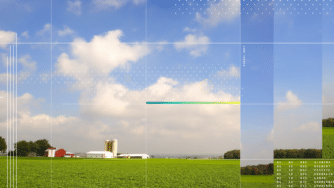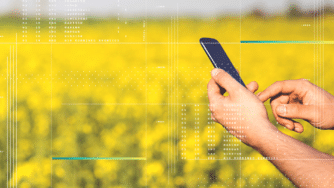By Margaret Kosmala
What are greenhouse gases?
The earth is surrounded by an atmosphere that allows us — and all land dwellers — to breathe. The atmosphere also protects us from space debris and from the radioactive rays of the sun. And it keeps the planet warm enough to sustain life.
The atmosphere helps the earth remain warm by trapping the heat that is generated when sun rays hit the planet. If you’ve ever left your car out in the sun with the windows up on a hot day, you’ve experienced this “greenhouse effect” for yourself — the inside of the car is much hotter than the outside air. Why? Because the sunlight goes through the windows, turns into heat when it hits your seats and dashboard, and then the heat gets trapped inside the car because it can’t go back out through the window. The atmosphere works the same way as your car windows.
Here’s another scenario: if you open your windows a little when you leave it out in the sun, the inside of the car is still hotter than the air outside the car — but not as much as if the windows were all the way up. And if you leave your windows all the way down, the inside of the car doesn’t feel that much different from the outside. The amount your windows are open changes the greenhouse effect of your car.
Our atmosphere acts like your car windows in this respect, too. Invisible “greenhouse gases” are responsible for how much of the sun’s heat stays close to earth and how much escapes into outer space. If the atmosphere has more greenhouse gases, the air surrounding earth gets warmer. And if the atmosphere has fewer greenhouse gases, the air gets colder.
Why should we care about greenhouse gases?
The important thing about greenhouse gases is that we need just the right amount of them in our atmosphere. In order for humans to survive on earth, we need a certain range of temperatures, which is controlled by these greenhouse gases. We need an even narrower range of temperatures to be comfortable and keep our civilization running the way we’re used to.
One thing that is greatly affected by earth’s temperature is the food we grow to feed ourselves. Not enough heat and crops grow too slowly to mature during the growing season; too much heat and the crops lose too much water and have trouble yielding. Different crops need different amounts of heat, which is part of why different crops are grown in different parts of the world. If the earth’s temperature heats up, then a crop that is traditionally grown in a specific place will no longer be growable there. This would create a great deal of disruption to world agriculture.
And, in fact, that is exactly what is happening today. The amount of greenhouse gases in the atmosphere is increasing and the earth is heating up. There are many consequences of this change in world temperature, including disrupted weather patterns, but the change isn’t the same everywhere. Farming is one of the first professions to feel the brunt of climate change, and farmers across the world are already noticing that the weather is dramatically different from the way it used to be.
What can farmers do?
Luckily, farmers can be part of the solution to climate change, too. The earth’s soil acts like a sponge to take some of the greenhouse gases out of the atmosphere, and it also emits some greenhouse gases back into the atmosphere. This cycling of gases is a natural part of how the earth works, but we can adjust the cycle based on how we manage the soil.
In order to bring greenhouse gas amounts closer to the ideal level, we need to reduce the amount of greenhouse gases coming out of the soil and increase the amount going into the soil. And in order to do that, we need to know a bit more about how farming releases greenhouse gases into the atmosphere and how it can trap more of those greenhouse gases in the soil.
Farming and greenhouse gases
The most common greenhouse gas is carbon dioxide, often written CO2, which is its chemical name. This is the same carbon dioxide that you breath out and that is in your soda and beer. Crops and other plants take CO2 from the air and use the carbon in it to grow. When plants die and decompose, some of that carbon stays in the soil and some of it turns back into CO2 that gets emitted back to the air.
When you hear about carbon sequestration, the goal is to keep as much of that dead and decomposing plant residue in the soil, so as to reduce the amount of CO2 that goes back into the air. Things that farmers can do to put carbon in the soil and keep it there include growing more biomass each year — either as cash crops or cover crops — incorporating residues, tilling as little as possible, and managing fields to minimize erosion.
Another greenhouse gas is nitrous oxide, often written as N2O. This is the same nitrous oxide that’s used in surgery as “laughing gas,” and is also used in rocket propellants and racing fuels. Nitrous oxide also happens to be a powerful greenhouse gas, meaning that just a little of it has a large impact on earth’s warming. Because it stays in the atmosphere a lot longer than carbon dioxide, it is estimated that it has more than 300 times the impact of CO2.
Modern farming is responsible for 80% of the nitrous oxide that is emitted in the United States. Just as carbon dioxide is released back to the atmosphere from soils as plant residue decomposes, so is nitrous oxide. However, because farmers apply nitrogen fertilizer, there is an excess of nitrogen in the soil available to become nitrous oxide. As a result, much more nitrous oxide is released from fertilized soils than from unfertilized ones.
Farming can help reduce nitrous oxide release from soils by using less nitrogen fertilizer, which has another greenhouse gas benefit. It turns out that creating artificial fertilizer requires a huge amount of energy. This energy typically comes from fossil fuels, meaning that a lot of carbon dioxide is emitted to the atmosphere just in the production of the fertilizer. So using less fertilizer cuts down on both nitrous oxide and carbon dioxide emissions.
The final major contributor to greenhouse gas emissions from farming is simply the burning of fossil fuel, typically diesel, to run farm machinery. Just like driving a car, driving a tractor produces carbon dioxide. Using more-efficient tractors and renewable energy when feasible are some ways farmers can reduce the greenhouse gas impact of their machinery.
Certain types of agriculture, such as cattle raising and rice farming, produce a third type of greenhouse gas called methane. However, for most row crop farming, carbon dioxide and nitrous oxide are the two major greenhouse gases of concern.
In the United States, there are more than 350 million acres of cropland. If the soil on each acre emitted just a little less carbon dioxide and nitrous oxide and retained just a bit more carbon, the cumulative effect could help solve the global climate change problem.
Many organizations are stepping up and looking for ways to help decrease their global footprint. CIBO is making it possible to understand potential greenhouse gas emissions on a national, state, county, and parcel level. Via the platform, growers can see their impact on climate change and the positive impacts they can have on the world by developing innovative sustainable solutions.
Registration to CIBO is free. See your land. See a simplified value. See CIBO.
About Margaret Kosmala
Margaret Kosmala is a Data Scientist at CIBO, a science-driven software startup. Prior to CIBO, she was a postdoctoral fellow at Harvard University and a predoctoral fellow at the Smithsonian Institution’s National Museum of Natural History. She holds a Ph.D. in Ecology from the University of Minnesota and a Bachelor of Science in Computer Science from Brown University.



